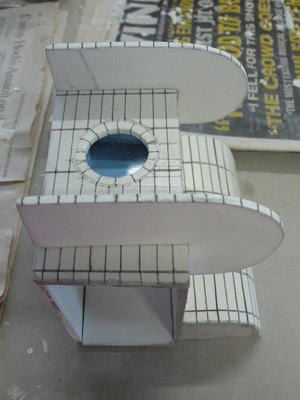Today's drawer is selected in honor of my nephew Tim & his friend Molly who yesterday reached Mt. Kathadin in Maine, having walked the more than 2100 miles between there & Springer Mountain in Georgia: the whole Appalachian Trail done & dusted!
Only some 500 people a year accomplish that entire length.
Along the way, they passed thru the emergence of the 17-year brood of cicadas & Molly, in her entries in the trail's logbooks, celebrated the cicada's loud & mysterious ways. In Chinese symbology, due to the nature of its life cycle, the cicada represents regeneration & immortality. As I listened to the daily susurrations of cicadas here in Shanghai, I pictured Tim & Molly in their entirely different reality out on the trail...
From Tim, about 300 miles ago:
I'm spellbound, and find it difficult to see that there is an actual end to this, the trail. That it could in its most abstract essence end, this lifestyle that has permeated me, of sunrises and sunsets, of not knowing where you'll be at the end of the day, feeling small yet full against the swathes of space all around, and well, simply happy. These things just feel timeless now, stretching on beyond any mileage, they go to the horizon, even if it is obscured by mountains in our path, and the horizon, I suppose, goes on endlessly.
 |
Drawer 2.6 from the top: 1. & 2. Plastic net for catching your pet cricket 3. Cicada, found on the street on the way to the Metro, held in place by two pearl-headed pins 4. Mysterious curled up leaf entirely & perfectly perforated by small round holes, also found on the street. Casings for the "specimens" are meant to imitate display boxes in dusty old collections like those in the Shanghai Natural History Museum (below). The cicada's container is made from the shipping boxes required by the post office; the leaf's is made from the packaging for a popular juice drink. Photo credit for full drawer: Bruno David; all others are mine. |









































